Use Kirchhoff's laws, calculate the potential difference across the Resistor in the circuit of Fig.
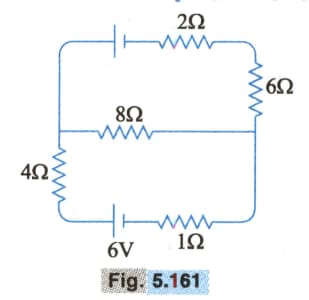


Important Questions on Current Electricity
A battery of And a variable resistance Are connected in series with the wire Of the potentiometer Fig. The length of the wire of the potentiometer is Metre. When a cell Of emf Is connected between and No current flows through , Length of
(i) Find the potential difference between the ends and Of the potentiometer,
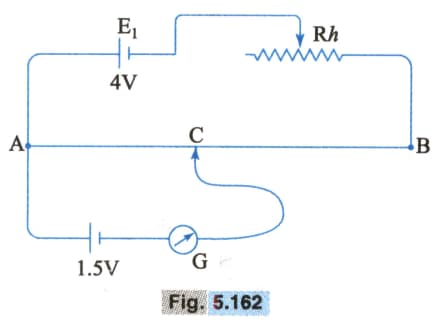
A battery of And a variable resistance Are connected in series with the wire Of the potentiometer Fig.5.162.5.162. The length of the wire of the potentiometer is 11 metre. When a cell Of emf Is connected between and No current flows through , Length of
(ii) would the method work if the battery Is replaced by a cell of emf ?
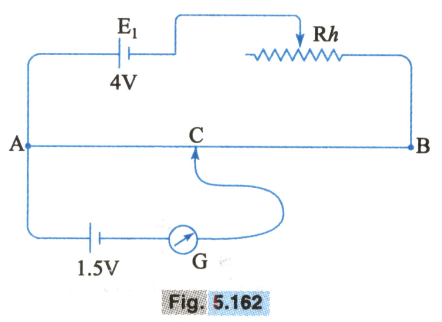
The figure, Fig. Shows a potentiometer with a cell of And internal resistance Maintaining a potential.
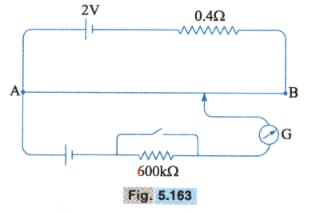
Drop across a resistor wire A standard cell which maintains a constant emf of (for very moderate current currents up to a few ) gives a balance point at Length of the wire. To ensure very low currents drawn from the standard cell, a very high resistance of Is put in series with it, which is shorted close to balance point. The standard cell is then replaced by a cell of unknown emf And the balance point found similarly turns out to be at Length of the wire.
(a) What is the value of ?
The figure, Fig. Shows a potentiometer with a cell of And internal resistance Maintaining a potential
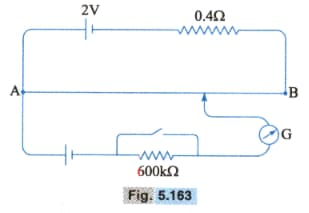
Drop across a resistor wire A standard cell which maintains a constant emf of (for very moderate current currents up to a few ) gives a balance point at Length of the wire. To ensure very low currents drawn from the standard cell, a very high resistance of Is put in series with it, which is shorted close to balance point. The standard cell is then replaced by a cell of unknown emf And the balance point found similarly turns out to be at Length of the wire.
(b) What purpose does the high resistance of .
The figure, Fig. Shows a potentiometer with a cell of And internal resistance Maintaining a potential
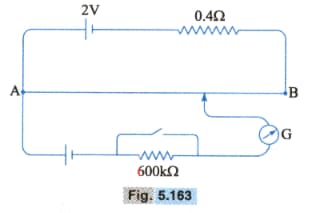
Drop across a resistor wire A standard cell which maintains a constant emf of (for very moderate current currents up to a few ) gives a balance point at Length of the wire. To ensure very low currents drawn from the standard cell, a very high resistance of Is put in series with it, which is shorted close to balance point. The standard cell is then replaced by a cell of unknown emf And the balance point found similarly turns out to be at Length of the wire.
(c) Is the balance point effect by this high resistance?
The figure, Fig. Shows a potentiometer with a cell of And internal resistance Maintaining a potential
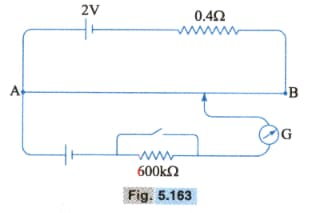
Drop across a resistor wire A standard cell which maintains a constant emf of (for very moderate current currents up to a few ) gives a balance point at Length of the wire. To ensure very low currents drawn from the standard cell, a very high resistance of Is put in series with it, which is shorted close to balance point. The standard cell is then replaced by a cell of unknown emf And the balance point found similarly turns out to be at Length of the wire.
(d) Is the balance point affected by the internal resistance of the driver cell?
The figure, Fig. Shows a potentiometer with a cell of And internal resistance Maintaining a potential
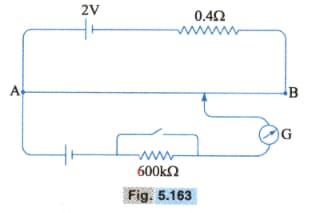
Drop across a resistor wire A standard cell which maintains a constant emf of (for very moderate current currents up to a few ) gives a balance point at Length of the wire. To ensure very low currents drawn from the standard cell, a very high resistance of Is put in series with it, which is shorted close to balance point. The standard cell is then replaced by a cell of unknown emf And the balance point found similarly turns out to be at Length of the wire.
(e) Would the method work in the above solution if the driver cell of potentiometer had an emf of Instead of ?
